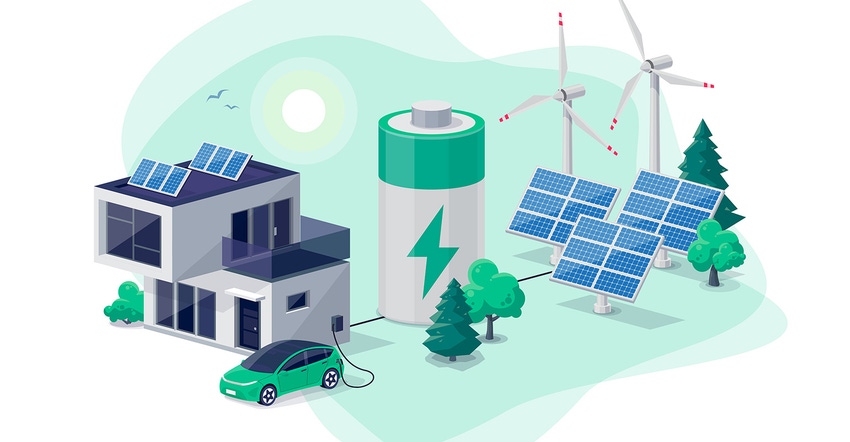How EV Bidirectional Charging Empowers Consumers
Bidirectional charging technology holds tremendous potential in empowering consumers and transforming the way they interact with energy systems. The EV bidirectional charging market keeps evolving as more pilot programs are paving the way for its widespread adoption.

Despite the challenges, EV bidirectional charging can help EV owners to play an active role in the energy market. By allowing two-way energy flow between the vehicle and the grid, consumers gain the ability to not only charge their EVs but also use the stored energy to power their homes or sell excess energy back to the grid.
This groundbreaking technology is turning the traditional role of EVs into mobile energy resources and providing consumers with potential control over their energy consumption. With bidirectional charging, consumers become key participants in the energy ecosystem, helping to enhance grid resilience and support the integration of renewable energy sources.
EV bidirectional charger market growing factors
According to Research and Markets, the bidirectional electric vehicle (EV) charger market was valued at $933.2M in 2022 and is anticipated to reach $4,8M by 2031, witnessing a CAGR of 20.02% during the forecast period 2022-2031. Research and Market states that the market is experiencing substantial growth, driven by several key factors.
Firstly, there is a rising demand for integrating renewable energy sources into the grid as the world increasingly embraces sustainable energy solutions. Bidirectional EV charging technology enables EV batteries to store excess renewable energy and feed it back into the grid when needed, facilitating efficient renewable energy integration.
Secondly, the growing penetration of EVs necessitates the expansion of charging infrastructure. Bidirectional EV charging presents an opportunity to enhance charging networks by allowing EVs to not only draw electricity from the grid but also contribute energy during peak demand periods, improving overall grid reliability and capacity.
Thirdly, bidirectional charging offers potential cost savings for EV owners. By selling surplus energy stored in their vehicle batteries back to the grid or utilizing it during high-demand hours, EV owners can reduce their energy expenses and, in some cases, generate profits.
Moreover, governments worldwide are providing incentives such as tax credits and subsidies to drive the adoption of bidirectional EV charging technology. These incentives encourage manufacturers to invest in research and development, further fueling market growth.
Lastly, advancements in electric vehicle and battery technology have greatly improved the efficiency and reliability of bidirectional charging systems. These technological developments have made bidirectional charging a more practical and viable solution for widespread deployment, contributing to the market's expansion.
Together, these factors are propelling the growth of the bidirectional EV charger market, creating opportunities for consumers, businesses, and the overall energy ecosystem to benefit from this transformative technology.
New EV bidirectional pilot program
PG&E's collaboration with BMW of North America marks an important milestone in the adoption of bidirectional charging technology. Through extensive testing and evaluation, both companies aim to gain valuable insights into the performance, interoperability, and grid integration of bidirectional charging systems.
“Electric grid sustainability is becoming an increasingly complex challenge across the US,” stated Adam McNeill, Vice President, Engineering, BMW of North America. “That's why we started our ChargeForward program in 2015, to connect our vehicles, our customers, and the grid. Vehicle-to-everything (V2X) takes smart charging to the next level, exploring how EV batteries can be used for backup generation and other grid services. We're excited to continue pursuing additional customer benefits while helping make the grid more dependable and sustainable.”
This testing initiative is taking place at PG&E's Applied Technology Services (ATS) Lab in San Ramon, CA. The pilot program aligns with PG&E's commitment to clean energy innovation and customer empowerment. By exploring new solutions like bidirectional charging, PG&E aims to create a sustainable energy future that benefits both the environment and the consumers it serves.
“The utility and automotive industries are creating a transformative clean energy future together. At PG&E we are working with partners like BMW to unleash the full potential of EVs to enhance grid resilience and reliability for our customers, while reducing carbon emissions in our hometowns" stated Aaron August, PG&E Vice President, Utility Partnerships and Innovation. “Clean-powered EVs are vital to the battle against climate change. Using V2X technology to create virtual power plants from EVs can help utilities like ours meet peak electricity demand without the need for non-renewable energy resources. With smart, managed bi-directional charging, we can decarbonize our planet at a lower cost to our customers."
PG&E and BMW of North America's collaborative efforts in EV bidirectional charging represent a significant step forward in revolutionizing the way consumers engage with energy systems. By providing consumers with the ability to actively participate in the energy market and optimize their energy usage, bidirectional charging technology unlocks new opportunities for empowerment and a more sustainable energy future.
To learn more about EVs with bidirectional capabilities visit BT’s article titled “8 EVs with Bi-Directional Charging Capabilities”
About the Author(s)
You May Also Like





